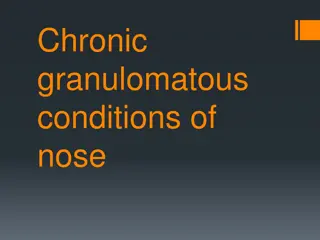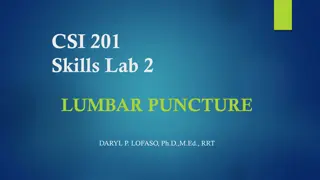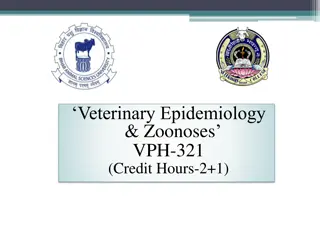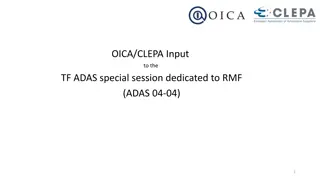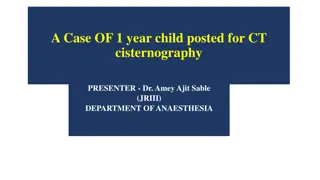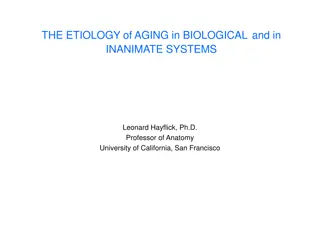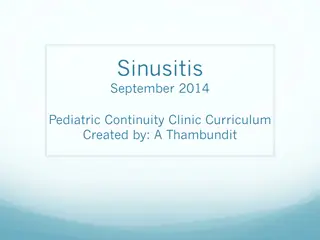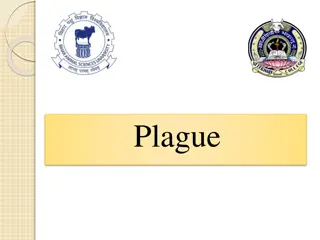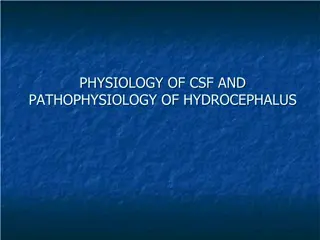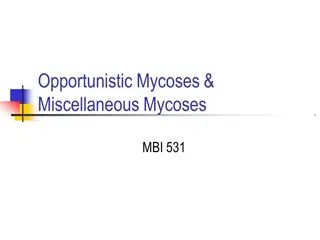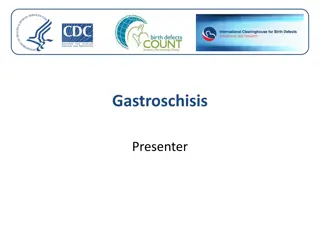Understanding CSF Rhinorrhea and Its Etiology
Cerebrospinal fluid (CSF) rhinorrhea is caused by an osseous defect at the skull base, leading to a leak due to disruption of the dura mater and arachnoid. Trauma and iatrogenic factors are common causes, with non-traumatic cases often linked to high-pressure leaks or tumor growth. Diagnosis involves a thorough work-up including history, physical examination, and nasal endoscopy. Treatment varies based on the underlying etiology. Understanding the mechanisms and etiology of CSF rhinorrhea is essential for effective management.
Download Presentation

Please find below an Image/Link to download the presentation.
The content on the website is provided AS IS for your information and personal use only. It may not be sold, licensed, or shared on other websites without obtaining consent from the author. Download presentation by click this link. If you encounter any issues during the download, it is possible that the publisher has removed the file from their server.
E N D
Presentation Transcript
CSF Constituents CSF consists of a mixture of : Water Electrolytes (Na+, K+, Mg2+, Ca2+, Cl-, and HCO3-) Glucose (60-80% of blood glucose) Amino acids, and various proteins (22-38 mg/dL) It is colorless & clear Devoid of cells such as polymorphonuclear cells and mononuclear cells (< 5/ L).
CSF Production CSF is produced by choroid plexus (50 to 80%) at a rate of approximately 20 mL/h (500 mL daily). At any given time, approximately 90-150 mL of CSF is circulating throughout the CNS. Normal CSF pressure is 10-15 mm Hg
CSF rhinorrhea Result of an osseous defect at the skull base coupled with a disruption of the dura mater and arachnoid with a resultant pressure gradient that leads to a CSF leak.
Etiology: Trauma Most common area - anterior cranial fossa: (cribiform and roof of ethmoid) Iatrogenic: Endoscopic sinus surgery most common cause
Etiology Non-traumatic High Pressure Leaks Tumor growth (typically pituitary tumors) Hydrocephalus
Etiology Non-traumatic Normal Pressure Leaks: 55% of non-traumatic cases Tumors and other osteolytic causes Tumors invade and erode skull base: Nasopharyngeal carcinoma, angiofibroma, inverting papilloma, osteomas Other osteolytic lesions Sinusitis Syphilis Mucoceles
Work-up History Physical Nasal endoscopy Have patient lean forward and strain may elicit a leak Compression of both jugular veins may elicit a CSF leak Clear, watery discharge from a single nare Supine positioning -> increased postnasal drip Salty taste in mouth Headaches relieved when CSF begins to drain







